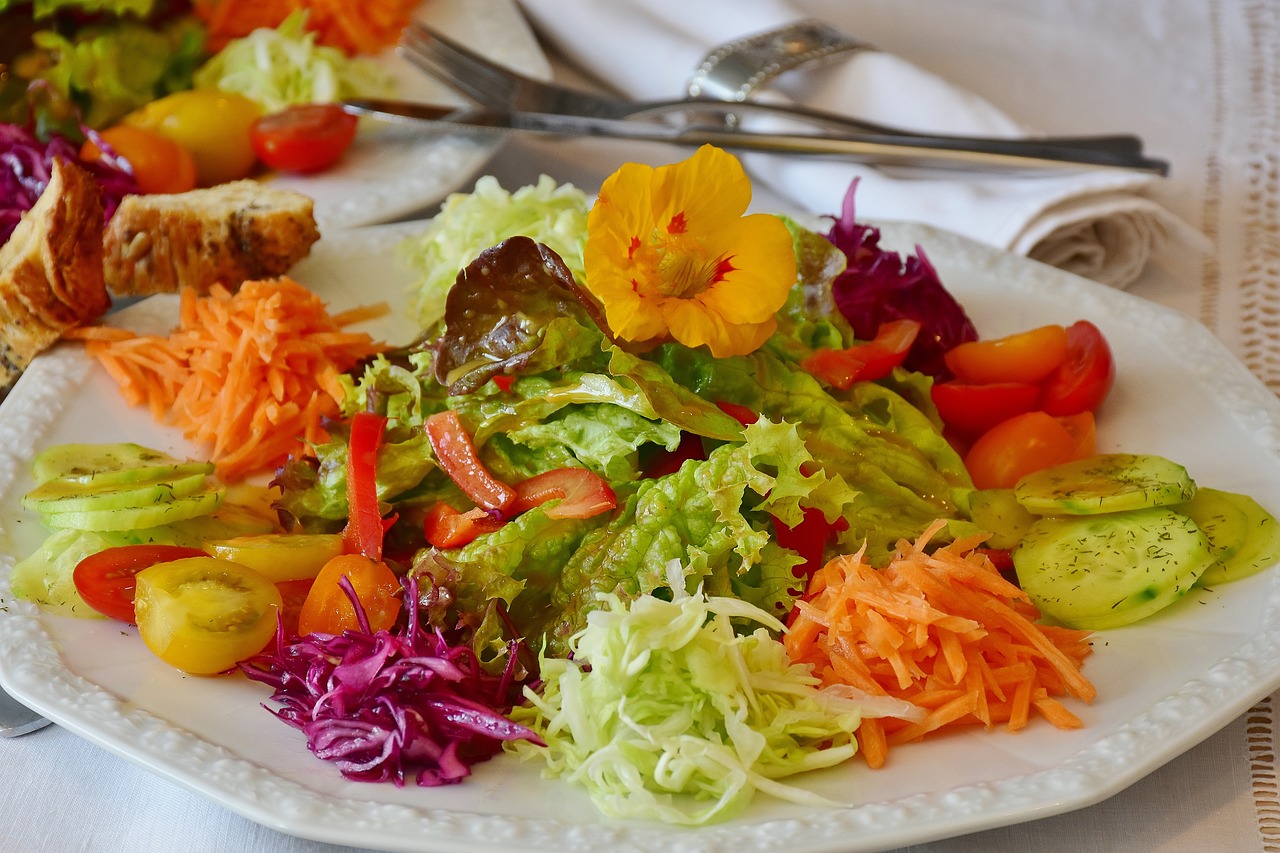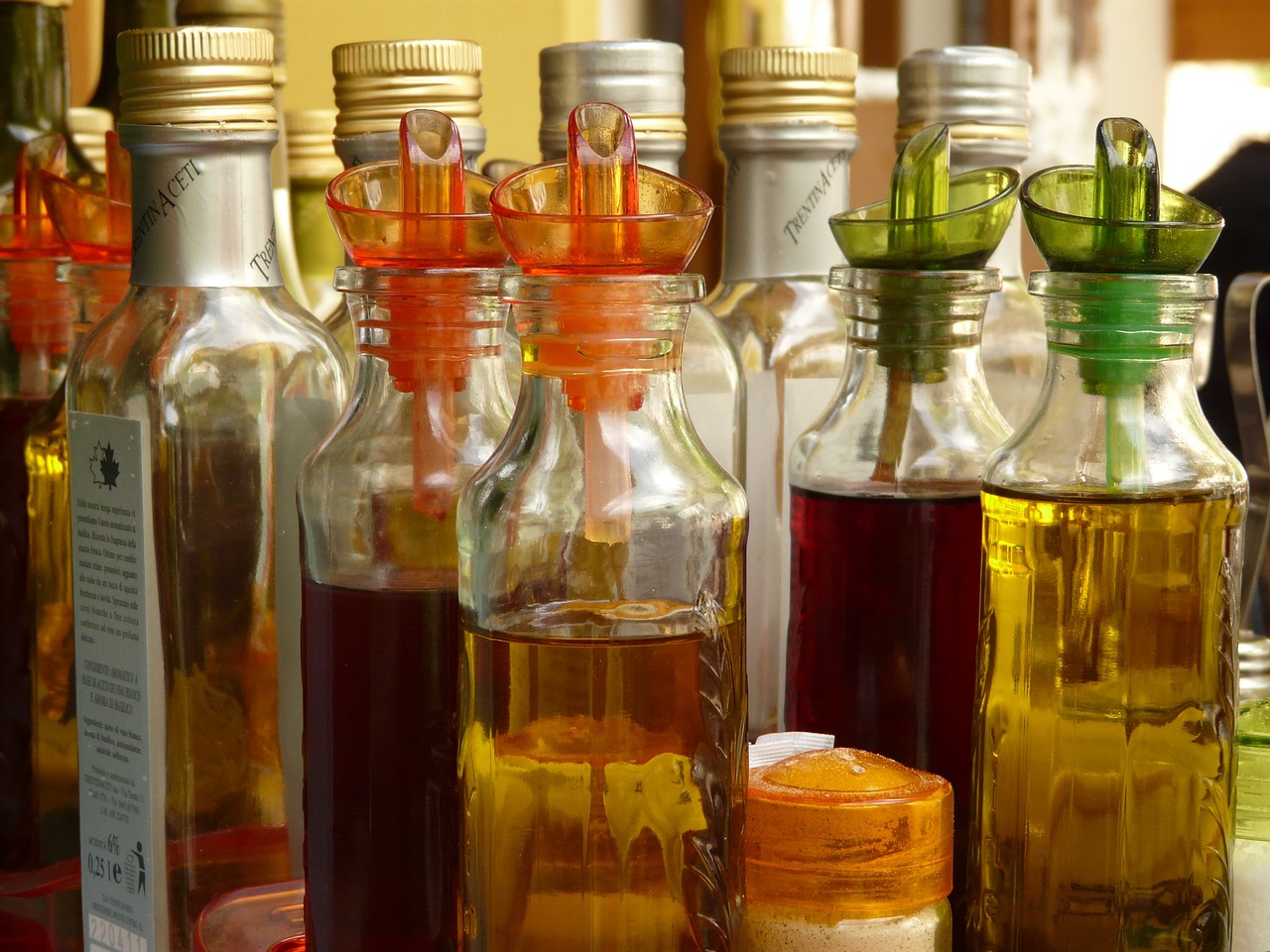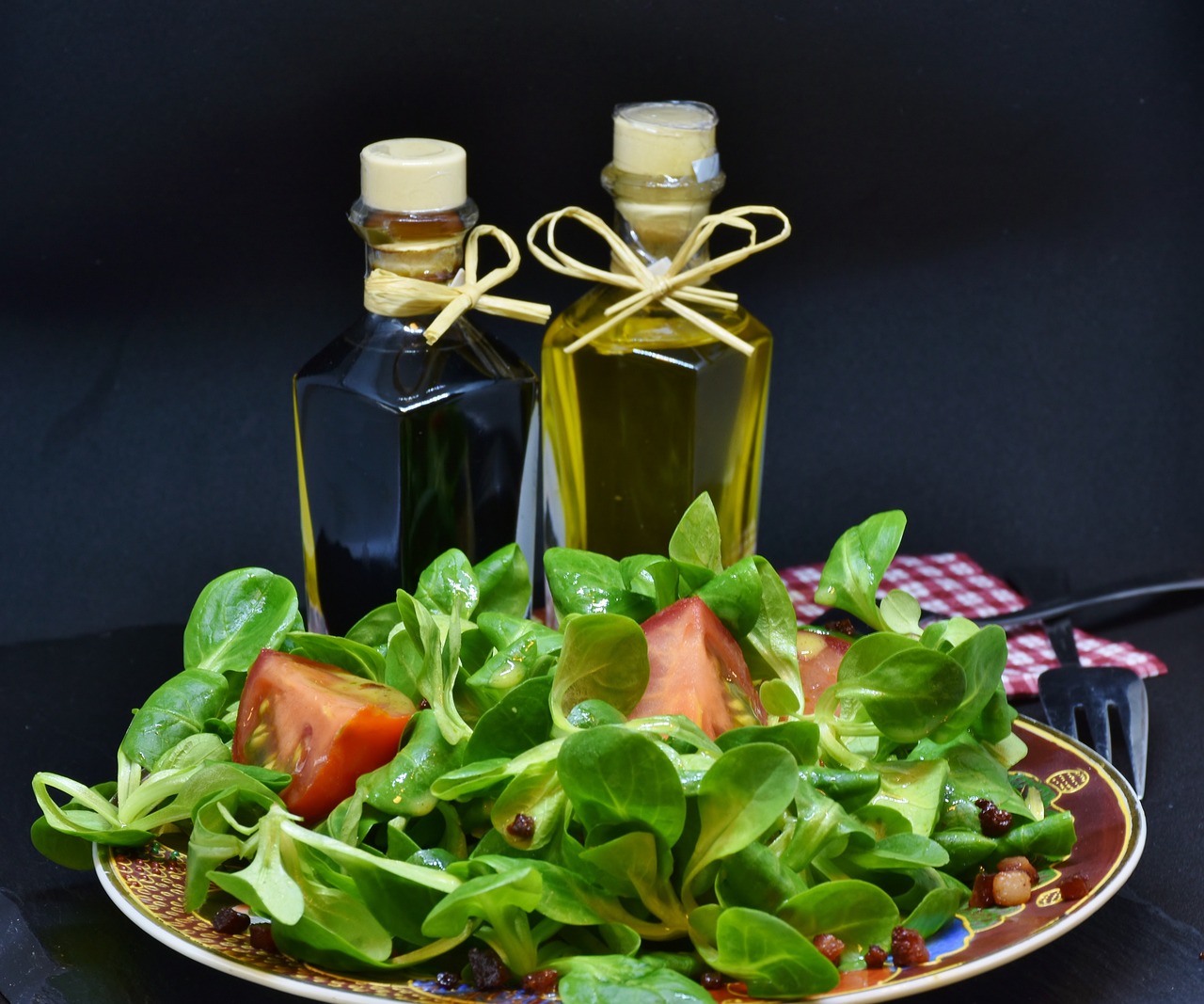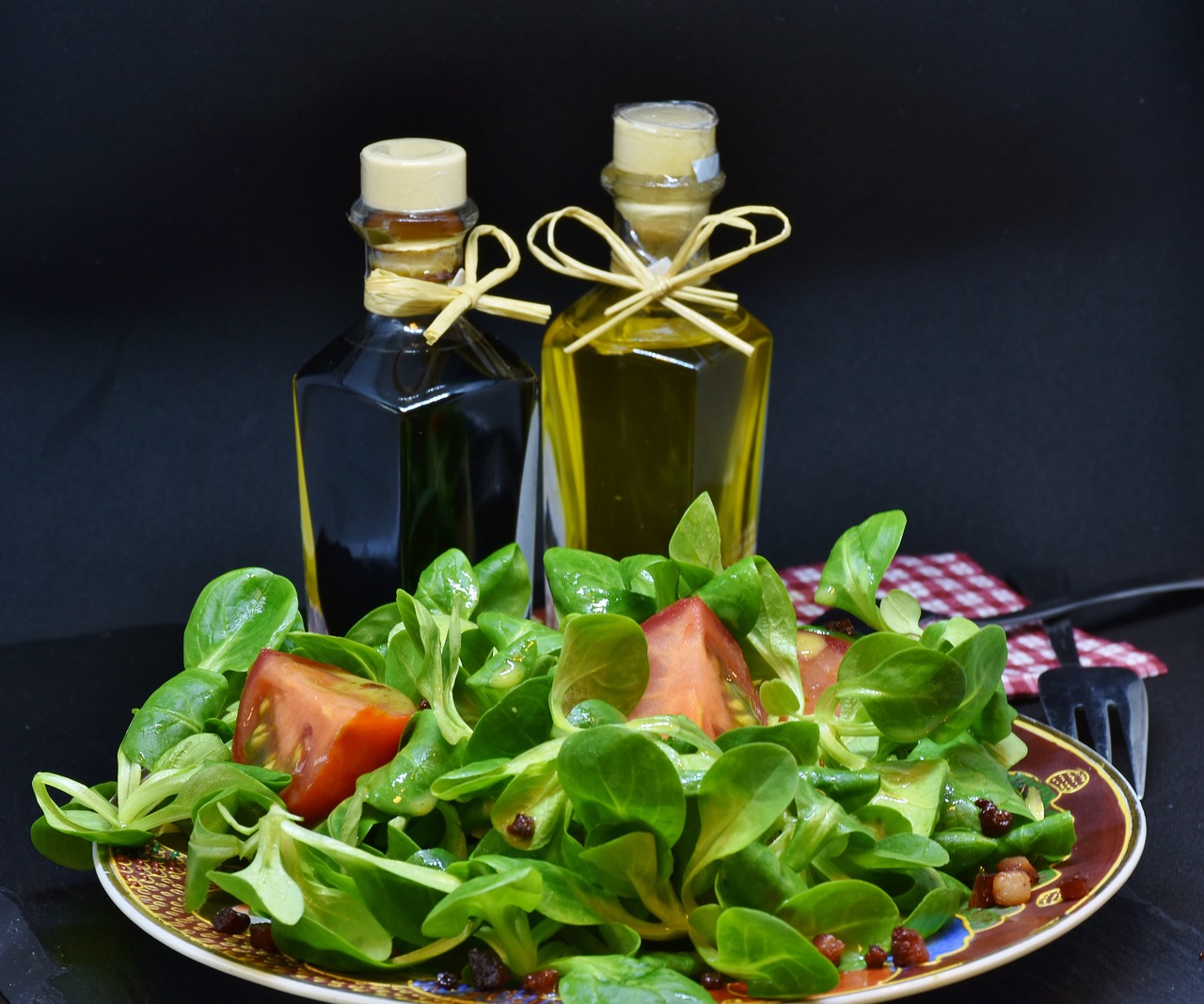If you’ve ever wondered how a seemingly simple ingredient like vinegar can transform your meals into culinary masterpieces, prepare to be amazed. In this article, we’ll take a deep dive into the science behind vinegar and its magical powers in cooking. From its ability to enhance flavors and tenderize meat to its role in preserving food, vinegar is a versatile ingredient that holds the key to unlocking a world of delicious possibilities in your kitchen. So grab your apron and get ready to unleash the incredible potential of vinegar as we unravel the secrets of this acidic superstar.

What is Vinegar?
Overview of vinegar
Vinegar is a versatile and widely-used ingredient in cooking that is made through a fermentation process. It has been used for centuries and is derived from various sources such as fruits, grains, and alcohol. Vinegar is known for its distinct tangy flavor and is commonly used as a condiment, preservative, and flavor enhancer in a wide range of cuisines.
Types of vinegar
There are numerous types of vinegar available, each with its unique flavors and characteristics. Some common types include:
- Apple cider vinegar: Made from fermented apple juice, apple cider vinegar is known for its slightly sweet and fruity flavor. It is often used in salad dressings, marinades, and pickling.
- Balsamic vinegar: Originating from Italy, balsamic vinegar is made from the reduction of grape juice. It has a rich, dark color and a sweet, complex flavor. Balsamic vinegar is commonly used in salad dressings, glazes, and drizzled over cooked meats and vegetables.
- White vinegar: White vinegar is one of the most versatile types of vinegar. It is clear in color and has a sharp, acidic taste. It is widely used in pickling, cleaning, and as a flavoring agent in various dishes.
- Red wine vinegar: Made from fermented red wine, red wine vinegar has a robust and tangy flavor. It is often used in marinades, vinaigrettes, and to deglaze pans.
- Rice vinegar: Popular in Asian cuisine, rice vinegar is made from fermented rice. It has a mild and slightly sweet flavor, making it suitable for dressings, stir-fries, and sushi rice.
These are just a few examples, and the world of vinegar is vast and diverse, offering an array of unique flavors to enhance your culinary creations.
Production process
The production of vinegar involves a two-step fermentation process. The first step includes converting sugars to alcohol through yeast fermentation. This creates a solution known as the “vinegar mother,” which is a gelatinous substance that contains the bacteria needed for the second fermentation step.
In the second step, the vinegar mother is immersed in an alcoholic solution such as wine or cider. The bacteria present in the vinegar mother convert the alcohol into acetic acid, which gives vinegar its distinctive tangy taste. The fermentation process can take several weeks to months, depending on the type of vinegar being produced.
Once the fermentation process is complete, the vinegar is pasteurized or filtered to remove any impurities. It is then bottled and ready for consumption.
Chemistry of Vinegar
Acetic acid
Acetic acid is the main component of vinegar and is responsible for its sour taste and pungent aroma. It is a weak acid with the chemical formula CH₃COOH. Acetic acid is produced when the bacteria in the vinegar mother convert alcohol into acetic acid through oxidation.
pH levels
Vinegar is known for its acidic properties, and its pH level varies depending on the type of vinegar. Generally, vinegar has a pH level between 2 and 3, making it highly acidic. The acidity of vinegar plays a crucial role in both cooking and food preservation.
Acidity and flavor
The acidity of vinegar not only adds a sour taste to dishes but also enhances and balances flavors. It has the ability to cut through richness and add brightness to various recipes. Different types of vinegar can impart unique flavors and enhance the overall taste profile of a dish.
Chemical reactions in cooking
Vinegar is involved in various chemical reactions during cooking. For example, when vinegar is added to baking soda, it creates carbon dioxide gas, resulting in a light and airy texture in baked goods. Vinegar can also be used to tenderize meats, as the acidic properties break down proteins and connective tissues, resulting in more tender and flavorful dishes.

The Role of Vinegar in Cooking
Flavor enhancer
Vinegar is a powerful flavor enhancer that can elevate the taste of a dish. It adds a tangy and acidic note that can brighten up salads, marinades, and sauces. Just a splash of vinegar can transform a simple dish into a culinary delight.
Tenderizing meat
The acidity in vinegar helps to tenderize tough cuts of meat. When used as a marinade or added to braising liquid, vinegar breaks down proteins and collagen, resulting in more tender and juicy meat. It can also impart additional flavor to the meat, enhancing the overall taste.
Preservative properties
Vinegar has been used as a natural preservative for centuries. Its acidic nature inhibits the growth of bacteria and prevents food spoilage. It is commonly used in pickling to preserve fruits and vegetables, allowing them to be enjoyed long after their harvest.
Marinades and dressings
Vinegar is a common ingredient in marinades and salad dressings. Its acidic properties help to tenderize meats and add a tangy flavor to dressings. Whether used in a classic vinaigrette or as a base for a marinade, vinegar adds depth and complexity to dishes.
Baking with vinegar
Vinegar plays a crucial role in baking, especially when it comes to creating light and fluffy baked goods. When combined with baking soda, vinegar produces carbon dioxide gas, which helps dough rise and creates a soft texture. It is often used in recipes such as cakes, quick breads, and pancakes to achieve a desirable consistency.
Benefits of Using Vinegar in Cooking
Health benefits
Vinegar offers several potential health benefits when consumed in moderation. It contains antioxidants that can help protect the body against inflammation and oxidative stress. Additionally, vinegar has been associated with aiding digestion, controlling blood sugar levels, and supporting weight loss efforts.
Digestive aid
Vinegar has traditionally been used as a digestive aid. It stimulates the production of digestive enzymes, which can help break down food more efficiently and promote a healthy digestive system. Adding a small amount of vinegar to a meal can aid in digestion and alleviate symptoms such as bloating and indigestion.
Blood sugar control
Vinegar has been found to have a positive impact on blood sugar control. It can help regulate blood glucose levels, particularly after a high-carbohydrate meal. Consuming vinegar with meals may improve insulin sensitivity and reduce the risk of blood sugar spikes.
Weight loss aid
Research suggests that vinegar may aid in weight loss by increasing feelings of fullness and reducing calorie intake. It can help control appetite and prevent overeating. Including vinegar in your meals, whether as a dressing or in a beverage, may assist in managing weight and promoting a healthy metabolism.
Antioxidant properties
Vinegar contains antioxidants such as polyphenols, which have been shown to have various health benefits. These antioxidants help protect the body against oxidative stress and fight against free radicals, which can contribute to chronic diseases. Incorporating vinegar into your culinary repertoire can provide you with these valuable antioxidant compounds.

Common Uses of Vinegar in Cooking
Pickling
One of the most common uses of vinegar in cooking is pickling. Vinegar’s high acidity creates an environment that inhibits the growth of bacteria, allowing fruits and vegetables to be preserved for extended periods. Pickled items, such as cucumbers, onions, and carrots, offer a tangy and flavorful addition to sandwiches, salads, and charcuterie boards.
Sauces and marinades
Vinegar is a key ingredient in many sauces and marinades. Its acidity helps to balance flavors and tenderize meats. From a classic barbecue sauce to a tangy chimichurri marinade, vinegar adds depth and complexity to these culinary creations.
Salad dressings
Vinegar is a staple in salad dressings, adding a tangy note that complements various greens and vegetables. From a simple vinaigrette made with olive oil and balsamic vinegar to a creamy dressing with mayonnaise and apple cider vinegar, there are countless ways to incorporate vinegar into your salad preparations.
Baking
Vinegar is useful in baking recipes, where it can contribute to the texture and leavening of the final product. When combined with baking soda, vinegar creates a reaction that produces carbon dioxide gas, resulting in a light and airy texture. This is particularly beneficial in recipes such as cakes, muffins, and quick breads.
Canning and preserving
Vinegar has long been used as a natural preservative in canning and preserving. Its high acidity prevents the growth of bacteria and helps to maintain the quality and freshness of canned foods. From homemade jams and jellies to pickled vegetables, vinegar plays a crucial role in preserving the harvest and extending the shelf life of these products.
Vinegar in Culinary Techniques
Deglazing
Vinegar is a fantastic tool for deglazing pans. After searing meats or sautéing vegetables, there are often flavorful browned bits stuck to the bottom of the pan. By adding a splash of vinegar and scraping the pan with a spatula, you can dissolve these flavorful remnants, creating a delicious sauce or base for your dish.
Emulsification
Vinegar is often used in emulsified sauces and dressings. Its acidity helps stabilize the emulsion, preventing the ingredients from separating. Whether you’re making a classic mayonnaise or a tangy vinaigrette, vinegar can help create a smooth and creamy texture.
Tenderizing meat
As mentioned earlier, vinegar can tenderize meat due to its acidic properties. Marinating tougher cuts of meat in vinegar helps break down proteins, making them more tender and succulent. It also imparts a tangy flavor into the meat, adding another layer of complexity to your culinary creations.
Balancing flavors
Vinegar is an excellent tool for balancing flavors in dishes. Its acidity can cut through rich and fatty components, bringing balance to the overall taste. Whether drizzled over a fatty piece of meat or added to a rich sauce, vinegar can add brightness and harmony to a wide range of recipes.
Acid-base reactions
Vinegar is often used in baking recipes where an acid is needed to activate baking soda. When combined, the acid in vinegar reacts with the alkaline baking soda, creating carbon dioxide gas. This reaction helps dough rise and creates a light and tender texture in baked goods.
Vinegar and Food Safety
Antimicrobial properties
Vinegar possesses antimicrobial properties, making it a natural and effective cleaning agent. Its high acidity helps to kill bacteria and other microorganisms, making it a safe and eco-friendly option for cleaning kitchen surfaces, utensils, and appliances.
Food preservation
Vinegar has long been used as a method of food preservation due to its ability to inhibit the growth of bacteria and prevent spoilage. The high acidity creates an unfavorable environment for microorganisms, allowing certain foods to be safely stored for prolonged periods without refrigeration.
Toxin removal
Vinegar has been found to be effective in removing certain toxins from food, such as pesticides and bacteria. It can be used as a natural wash for fruits and vegetables, helping to reduce the presence of harmful substances and ensuring safer consumption.
Tips for Using Vinegar in Cooking
Choosing the right vinegar
When using vinegar in your cooking, it’s important to choose the right type for the recipe. Consider the flavor profile and acidity level required. For example, a sweeter vinegar like balsamic would work well in a glaze, while a sharp white vinegar is more suitable for pickling.
Proper measurement
Vinegar should be used in moderation, as its strong flavor can overpower a dish if used excessively. Use measuring spoons or a kitchen scale to ensure accurate amounts are added to your recipes. Start with smaller quantities and adjust according to your taste preferences.
Balance with other flavors
Vinegar should be used to enhance flavors, not to dominate them. Balance its acidity with other ingredients to create a harmonious taste profile. Consider the other components in your dish and adjust the amount of vinegar accordingly.
Storing and shelf life
Proper storage is essential for maintaining the quality of vinegar. Store it in a cool, dark place away from sunlight and heat sources. Avoid transferring vinegar to metal containers, as it can react with certain metals. When stored properly, vinegar has a long shelf life, often lasting for years.
Precautions when using vinegar
While vinegar is generally safe for consumption, it is highly acidic. Avoid consuming excessive amounts as it can potentially irritate the digestive system. Additionally, be cautious when using vinegar around certain materials, as its acidity can cause corrosion or discoloration.
Traditional Uses of Vinegar in Different Cuisines
Asian cuisine
Vinegar is a common ingredient in various Asian cuisines. In Chinese cuisine, black vinegar is used in dishes such as sweet and sour pork or noodles. Rice vinegar is a key component in Japanese sushi rice and is also used in stir-fries and marinades. In Korean cuisine, vinegar is often added to kimchi and various dipping sauces.
Mediterranean cuisine
In Mediterranean cuisine, vinegar plays a significant role in creating vibrant and flavorful dishes. Balsamic vinegar is a staple in Italian cooking, used in salad dressings, marinades, and sauces. In Greek cuisine, red wine vinegar is often drizzled over salads or used to marinate meats. In Middle Eastern cuisine, sumac vinegar is used to add tanginess to dishes.
American cuisine
Vinegar is widely used in American cuisine, both in traditional dishes and modern cooking techniques. White vinegar is commonly used in pickling and canning, while apple cider vinegar is a favorite for marinades and salad dressings. Barbecue sauces often include a vinegar component, adding tang and balancing flavors.
Latin American cuisine
Vinegar plays a crucial role in Latin American cuisine, adding acidity and complexity to dishes. In Mexican cuisine, vinegar is used in salsas, marinades, and pickled vegetables. In South American cuisine, vinegar is used in ceviches, a popular dish where raw fish is “cooked” in a mixture of citrus juice and vinegar.
European cuisine
European cuisines feature various types of vinegar in their traditional recipes. In French cuisine, vinegar is used in classic vinaigrettes, as well as to deglaze pans and create rich sauces. In British cuisine, malt vinegar is a key ingredient in dishes like fish and chips. European cuisines often showcase the diverse flavors and qualities of vinegar.
Innovative Usage of Vinegar in Modern Cooking
Vinegar-based cocktails
Mixologists have discovered the unique flavor profile that vinegar brings to cocktails. Vinegar-based cocktails, also known as shrubs, are a trendy addition to the cocktail scene. These tangy and refreshing drinks combine vinegar with fruits, herbs, and sweeteners to create a balanced and complex flavor experience.
Vinegar-infused desserts
Innovative pastry chefs are using vinegar in desserts to add a surprising and tangy twist. Vinegar can enhance flavors in desserts such as ice cream, sorbets, and fruit-based desserts. It can also act as a natural preservative, helping to extend the shelf life of delicate pastries.
Vinegar in molecular gastronomy
Molecular gastronomy is known for pushing the boundaries of traditional cooking techniques, and vinegar has found its place in this innovative realm. Chefs experiment with vinegar powders, spheres, and gels to create unique textures and flavor combinations in their avant-garde dishes.
Vinegar in vegan and plant-based cooking
Vinegar is particularly useful in vegan and plant-based cooking, where it can help mimic the flavors of traditional dishes. For example, vinegar can add tanginess to vegan cheese alternatives or enhance the umami taste in plant-based meat substitutes. It is a versatile ingredient that adds depth and complexity to cruelty-free culinary creations.
Vinegar in fusion cuisine
Fusion cuisine combines elements from various culinary traditions, creating exciting new flavors. Vinegar plays a valuable role in fusion cuisine, adding acidity and balance to dishes that incorporate multiple cultural influences. With its wide range of flavors and versatility, vinegar can seamlessly integrate and elevate fusion dishes.
In conclusion, vinegar is a remarkable ingredient that brings acidity, flavor, and versatility to the culinary world. From traditional uses in pickling and salad dressings to innovative applications in molecular gastronomy, vinegar continues to captivate chefs and home cooks alike. Whether you’re looking to enhance the taste of your dishes, tenderize meat, or explore the exciting world of vinegar-based cocktails, this acidic magic in cooking is sure to elevate your culinary creations to new heights. So go ahead, embrace the friendly tang of vinegar and let your taste buds embark on a flavorful journey.

